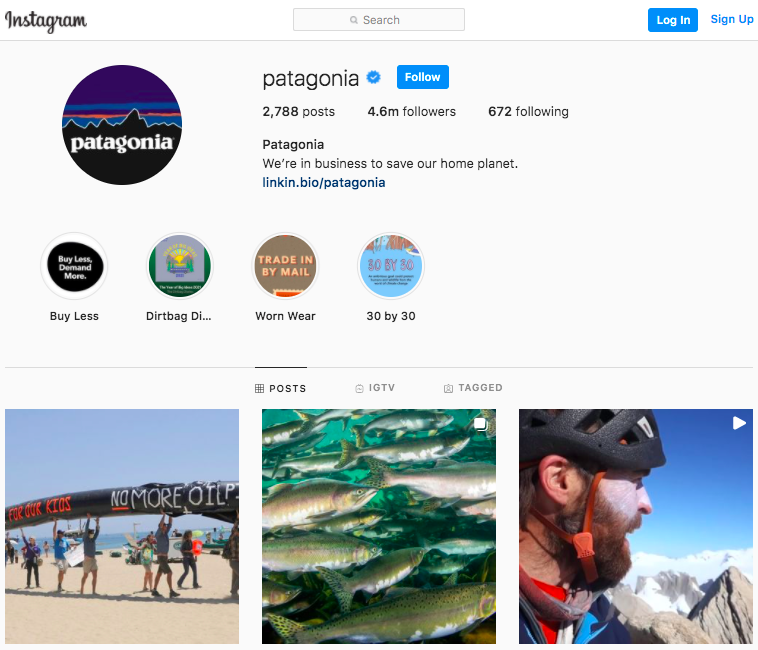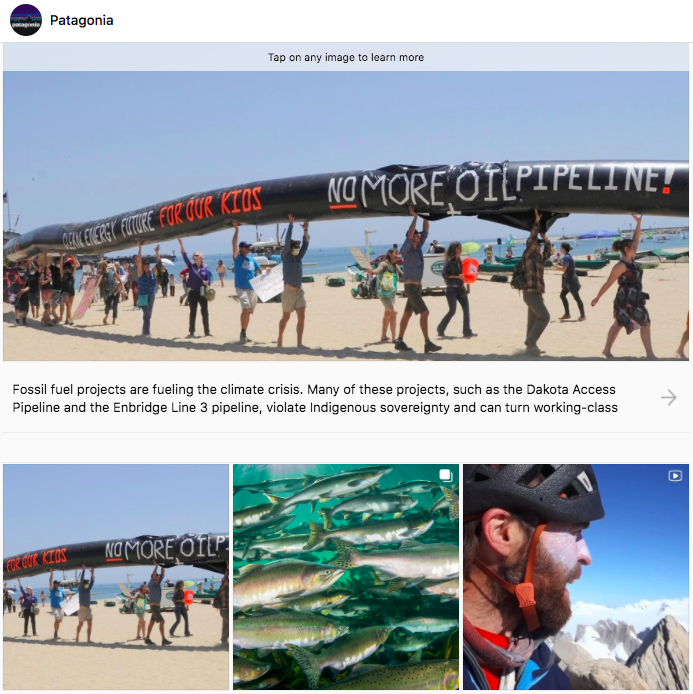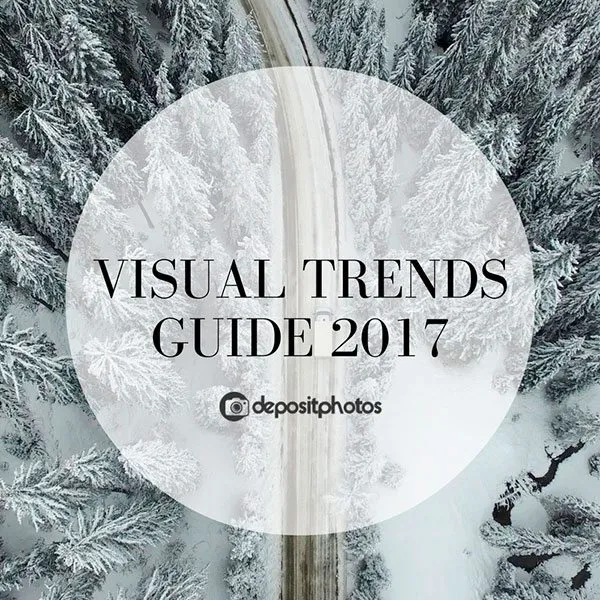A Brief Guide on Sequential Storytelling
Storytelling is an important skill to master if you’re a marketer. You might not be familiar with the term yet, but that doesn’t mean you haven’t practiced it already. Content such as YouTube ads, TikTok videos, and Instagram Stories are already built on the principle of a narrative.
In the past, we’ve focused on how to tell a story using visuals and text on social media (Best Practice for Designing Instagram Stories). In this article, we’ll dive deeper into sequential storytelling, which is a relatively new, but promising form of communication with clients.
What is sequential storytelling in marketing?
The term sequential storytelling was only recently added to the marketing lexicon. It was borrowed from an article by cartoonist Will Eisner, who coined the term to describe several works of art that are united by a single narrative (i.e. plot), but have individual value.
Traditional storytelling in marketing is about brand content that contains descriptions of events and narrative elements such as protagonists, conflicts, and settings. The structure of your story can vary, but it usually includes an introduction, crisis, and climax.
The difference between simple digital storytelling and sequential storytelling is that the latter combines several stories into a new story unit.
Advertising and storytelling on social media has been taking on features of sequential storytelling recently. Content creators are posting a series of different videos that follow a single topic. They usually attribute a hashtag to it, so that you can navigate through the posts. Sequential storytelling can also be found in the Highlights section on Instagram.
Brands opt for sequential storytelling when they want to engage more with netizents and make their messages memorable. The approach is fully justified: 74% of YouTube users claim to remember video ad sequencing better than standard 30-second ad videos.
Types of popular sequential storytelling structures (according to Think with Google): Tease–Amplify–Echo, Mini Series, Direct Shot, Follow Up, and Lead In. Each curve on the image below represents a separate story that is part of the big sequence.

Source: Think with Google
In simple terms, a sequence is any big story divided into parts (for example, a series of blog articles featuring someone’s adventures on their trip to Cameroon), or a series of more or less self-standing stories united by one topic, setting, message, or hero (for example, a series of eCommerce ads, where each ad contains a new interview with a different brand ambassador).
Places where we often spot sequential storytelling:
- YouTube
- Graphic novels and book series
- Modern advertising
- Cinema (movies with sequels and classic series)
- Stories on Instagram
- Challenges on TikTok
- Video games
- Billboard advertising
Sequential storytelling can be used both online and offline. Here is a sequential billboard campaign by Adidas featuring a hypnotizing GIF-effect.
Does sequential storytelling mean better ROI?
The potential for using sequential stories in marketing is huge. However, there are also certain issues that keep marketers from using this technique.
First of all, creating a sequence of stories takes significantly longer than a single promotional video or publication. In order to create a plot for the general and individual stories, you’ll need to involve a higher-level specialist (which is expensive). In addition to that, editing sequences at later production stages is difficult, expensive, and not always realistic.
So what makes marketers choose sequential storytelling? The main answer: higher engagement and conversion rates. The more often potential customers hear from you, the more likely they are to remember you. Moreover, if everything you put out is interconnected, the effectiveness of your communication drastically increases.
In marketing terms, sequential storytelling can result in a higher ROI (return on investment), but still requires large investments.
Sequential storytelling advantages:
? Higher campaign conversion rates than single visual stories
? Your brand and message becomes more memorable
? Higher chances of going viral
? More emotionally appealing to audiences
Sequential storytelling disadvantages:
? Not every content producer is keen on sequels
? Time-consuming and complicated media planning
? Several stories are more expensive to produce
? Less flexibility within your content strategy
5 tips to mastering digital storytelling skills
Sequential storytelling as a brand strategy on social media requires knowledge, skills, and budgets. To help you take your first steps, we’ve prepared a list of digital storytelling tips for beginners.
#1 Define your hero, setting, and conflict
Creating a story begins with developing characters, describing their universe, and looking for conflict that would resonate with your audience. Without reaching an agreement on these aspects, it makes no sense to delve into digital storytelling.
A simple way to go about it is by making your product, client, or employee the hero of your story. As for the setting, focus on the universe you live in. In order to find a conflict that interests your audience, go over the list of their intentions and fears.
For example, if you selling cosmetics, and your audience avoids animal-tested products, then the fight against animal cruelty is your conflict.
The stories told in Zero Hunger on YouTube are simple and contain three ‘heroes’: a chef who throws away one-third of his dish, and a trash can.
#2 Look for your perfect story structure
Sequential stories are tricky because you’re working with more than one story, and all of them have to work as a series. Depending on which sequence structure you choose, you might need to divide long-form content into several parts.
There is no definite answer to which type of sequence (Tease–Amplify–Echo, Mini Series, Direct Shot, Follow Up, or Lead In) is best. However, Google recently conducted research on the potential of sequential story structures, and their ability to influence brand awareness, ad recall, and user purchase intent. The most promising types ended up being Tease–Amplify–Echo and the Mini Series.
Tease–Amplify–Echo follows a rather simple structure. You have your introduction, followed by the most dramatic and important part of the story, and a simple post event story.
The Mini Series structure consists of multiple episodes, and each one contains a different plot or idea. There tends to be no character development in this structure.
Ikea’s Product Stories playlist is an example of the Mini Series format. Each video discusses the story behind an Ikea item, and adds value and emotional context to Ikea’s products.
#3 Study both sequential and single post metrics
An important advantage of the sequential approach is that you no longer have to chase first impressions.
Even if your first post or ad didn’t manage to impress, you’ll still have some more content left in your inventory. Users tend to notice and remember you only after several encounters (moreover, they are less likely to skip content with characters they’ve seen before).
Don’t expect high organic reach from your first Instagram video. When you have multiple videos on your profile, the metrics of the first video will also increase. The longer you discuss and play around with a topic, the more likely you are to attract an audience’s attention.
However, this does not mean that you should ignore the metrics of individual videos. Use analytics to identify the most effective artistic techniques and plot gimmicks. And here’s more on this topic: Simple (Yet Effective!) Social Media Video Checklist.
https://www.tiktok.com/@flighthouse
Flight House is one of the most highly followed brand accounts on TikTok. They post short, simple stories, and their reach grows exponentially.
#4 Understand platform settings and analytics tools
Online advertising and eCommerce analytics tools have transformed the way marketers, designers, and copywriters approach storytelling. This is because you can set a demographic for your ads (gender, age, profession, and interest), and control the sequence in which your ads are seen.
On platforms such as YouTube, you can make your sequence interactive by experimenting with the “go to advertiser’s site”, “respond to ads”, or “skip ad” options. A shining example of this approach is the No Poverty campaign. Depending on whether a user watches or skips a video, their sequence of advertising messages changes.
On Instagram, you can attach third-party pages to your posts using the Link in Bio option. Use it to create longer content sequences or tell interactive stories.


Patagonia used their Link in Bio section to provide sequels for stories from their News Feed.
The basic analytics dashboard on Facebook, Instagram, TikTok, Snapchat, and YouTube contain a lot of useful tools. The number of available tools usually increases if you use paid promotion features, or have an upgraded account (for example, you can make sure that only users who have seen part one see part two).
https://youtu.be/f4m5GHEek2A?list=PL9Xlh2Jq9l7VdrxcRabVETPinfQeZo4nl
No Poverty campaign is dedicated to homeless people in LA that are often ignored (“skipped”). By watching or skipping the videos, you are involved in a dialog with a person leaving on the street.
#5 Make the most of your budget
Videos are an effective content format that can help you achieve your marketing goals. But if you don’t have a budget to produce a series of videos, you can attempt sequential storytelling by using photos and text, or creating video loops based on them.
To reduce the costs of testing a new approach, you can avoid developing new intertextual concepts. Instead, focus on what you have, and what you know well. That is, your working sales funnel. Ask yourself what information your customer needs at each stage of the sales funnel, and devote your content series to answering those questions.
Use hashtags, links, or Highlights so that users can easily find different parts of your story.
In 2018, The New York Public Library launched a project called Insta Novels. The library offered users to read famous books in Highlights format on their Instagram.
Wrapping up
Storytelling on social media is becoming a leading form of communication for brands. This is what prompted platforms like Instagram, Facebook, and Snapchat to develop sequence features (for example, Highlights on Instagram). Thanks to this, we have a variety of ways to present our narratives.
Will sequential storytelling work for you? That’s a question that depends on your resource distribution. Storytelling sequence production takes significantly more time and requires a large budget. However, in the long run, they can result in higher conversion rates than single-story campaigns.





![Content Marketing Guide for 2020 and Beyond [Infographic]](https://depositphotos-blog.s3.eu-west-1.amazonaws.com/uploads/2020/08/Content-Marketing-Guide-for-2020-and-Beyond-Infographic.webp)




